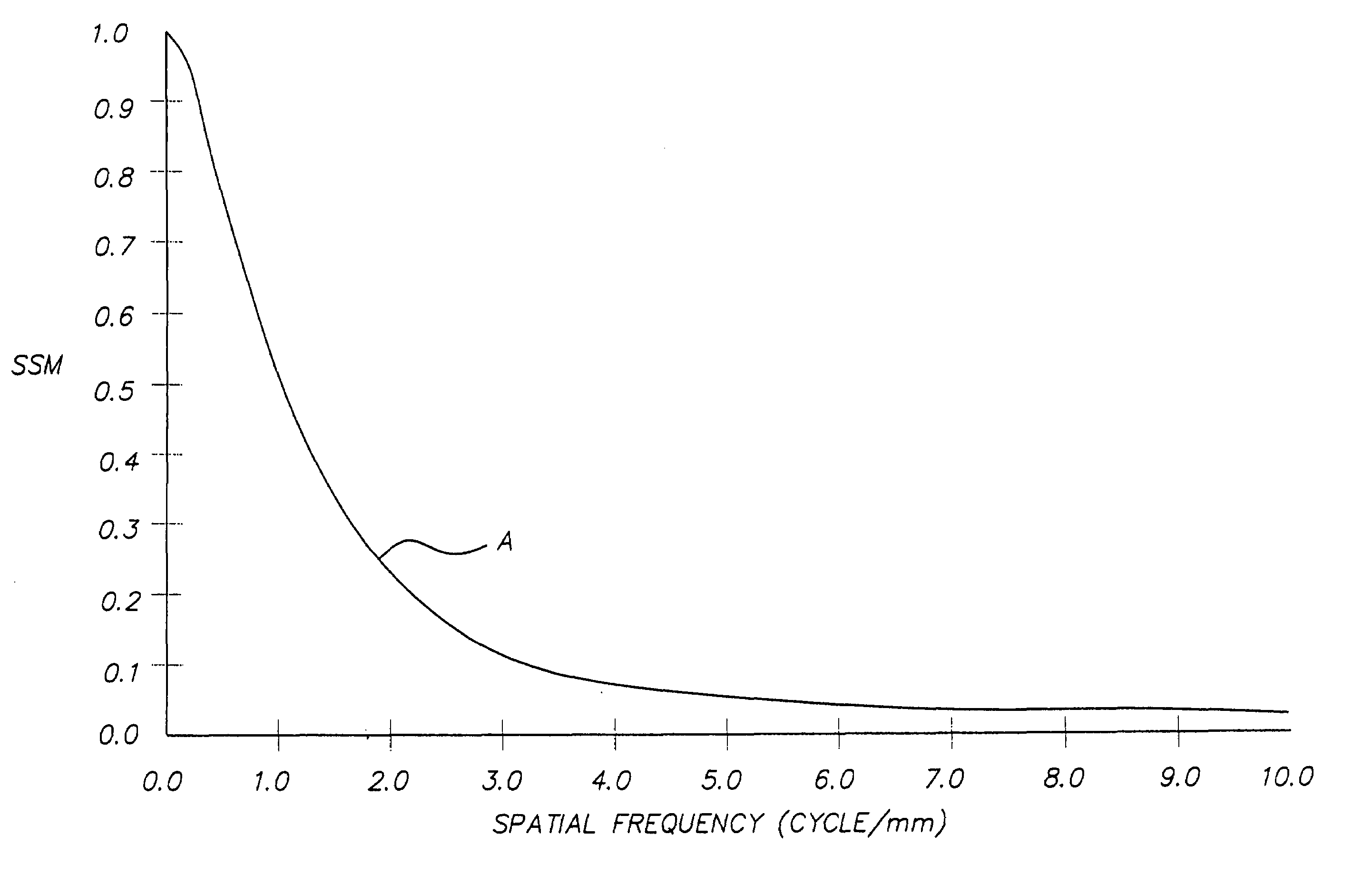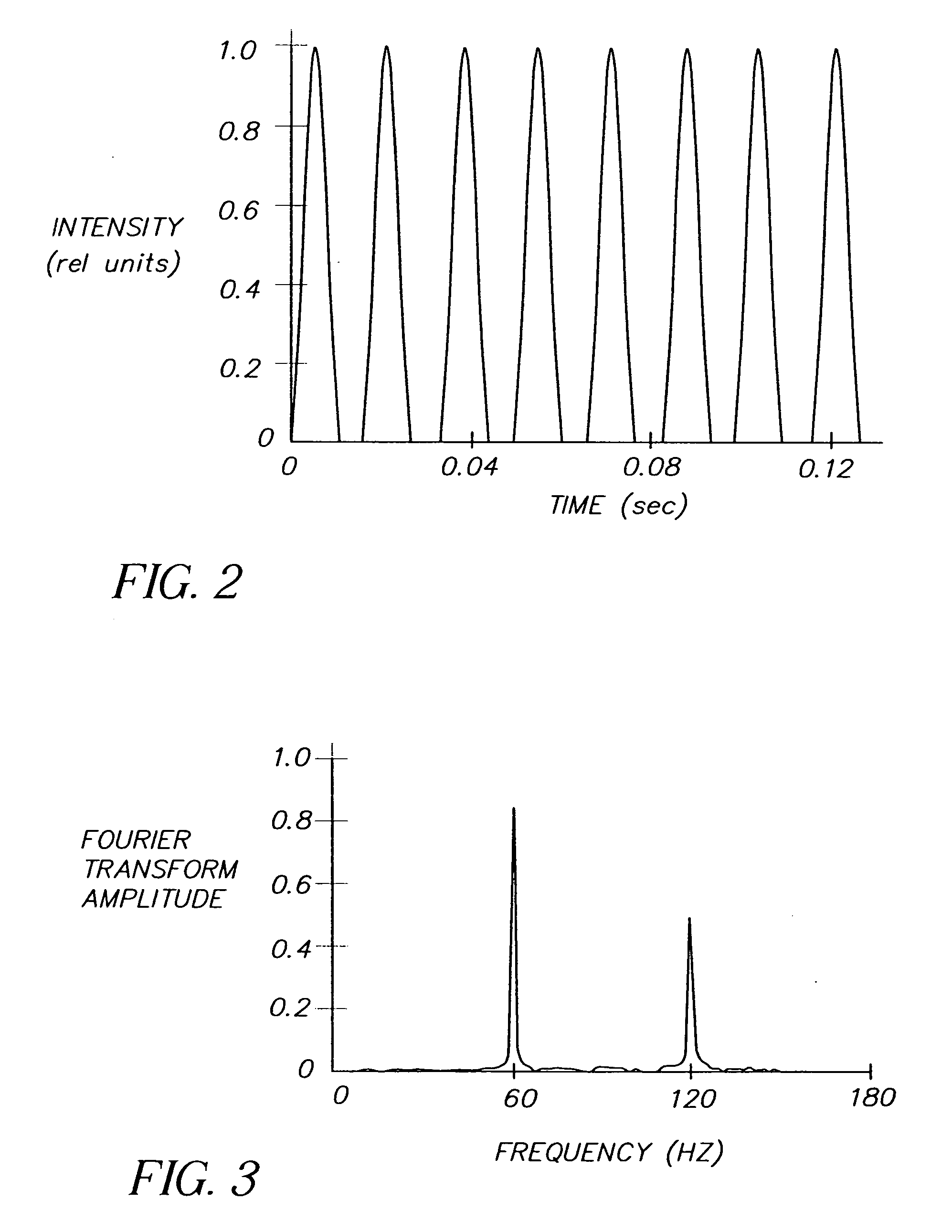High speed radiographic imaging assembly
a radiographic and assembly technology, applied in the field of radiography, can solve the problems of poor image quality, poor resolution, and inability to use higher-speed films in such assemblies, and achieve the effects of high system photographic speed, high contrast, and sharp images
- Summary
- Abstract
- Description
- Claims
- Application Information
AI Technical Summary
Benefits of technology
Problems solved by technology
Method used
Image
Examples
example 1
[0130]Radiographic Film A:
[0131]Radiographic Film A was a duplitized film having the two different silver halide emulsion layers on each side of a blue-tinted 170 μm transparent poly(ethylene terephthalate) film support and an interlayer and overcoat layer over each emulsion layer. The emulsions of Film A were not prepared using oxidized gelatin.
[0132]Radiographic Film A had the following layer arrangement:[0133]Overcoat[0134]Interlayer[0135]Emulsion Layer[0136]Support[0137]Emulsion Layer[0138]Interlayer[0139]Overcoat
[0140]The noted layers were prepared from the following formulations.
[0141]
Coverage (mg / dm2)Overcoat FormulationGelatin vehicle 3.4Methyl methacrylate matte beads 0.14Carboxymethyl casein 0.57Colloidal silica (LUDOX AM) 0.57Polyacrylamide 0.57Chrome alum 0.025Resorcinol 0.058Spermafol 0.15Interlayer FormulationGelatin vehicle 3.4Carboxymethyl casein 0.57Colloidal silica (LUDOX AM) 0.57Polyacrylamide 0.57Chrome alum 0.025Resorcinol 0.058Nitron 0.044Emulsion Layer Formula...
example 2
[0165]Cassettes used for imaging contained a pair of screens X, Y, or V, on opposing sides of the noted Radiographic Films A, B, or C described in Example 1.
[0166]Fluorescent intensifying screen “V” was a fluorescent intensifying screen that comprised a terbium activated gadolinium oxysulfide phosphor (median particle size of 7.8 to 8 μm) dispersed in a Permuthane™ polyurethane binder in a single phosphor layer on a microvoided poly(ethylene terephthalate) support. The total phosphor coverage was 9.2 g / dm2 and the phosphor to binder weight ratio was 27:1. The screen speed was 600.
[0167]The microvoided support used in Screen V was prepared as a 3-layer film (with designated layers 1, 2 and 3) comprising voided polyester matrix layers. Materials used in the preparation of layers 1 and 3 of the film were a compounded blend consisting of 60% by weight of barium sulfate (BaSO4) particles approximately 0.7 μm in diameter (Blanc Fixe XR-HN available from Sachtleben Corp.) and 40% by weight...
example 3
[0176]Radiographic Film C described above in Example 1 can also be combined with pairs of the fluorescent intensifying screens shown in TABLE V. Those imaging assemblies having system speeds of at least 700 are within the scope of the present invention.
[0177]
ScreenSystemSSM @ 2FilmScreenSpeedSpeedcycles / mmCKODAK1003000.83Lanex ® FineCKODAK1805000.79InSight ®SkeletalMediumCKODAK2807000.49(Invention)Lanex ®Medium
[0178]The invention has been described in detail with particular reference to preferred embodiments thereof, but it will be understood that variations and modifications can be effected within the spirit and scope of the invention.
PUM
| Property | Measurement | Unit |
|---|---|---|
| wavelength | aaaaa | aaaaa |
| average grain diameter | aaaaa | aaaaa |
| aspect ratio | aaaaa | aaaaa |
Abstract
Description
Claims
Application Information
 Login to View More
Login to View More - R&D
- Intellectual Property
- Life Sciences
- Materials
- Tech Scout
- Unparalleled Data Quality
- Higher Quality Content
- 60% Fewer Hallucinations
Browse by: Latest US Patents, China's latest patents, Technical Efficacy Thesaurus, Application Domain, Technology Topic, Popular Technical Reports.
© 2025 PatSnap. All rights reserved.Legal|Privacy policy|Modern Slavery Act Transparency Statement|Sitemap|About US| Contact US: help@patsnap.com



